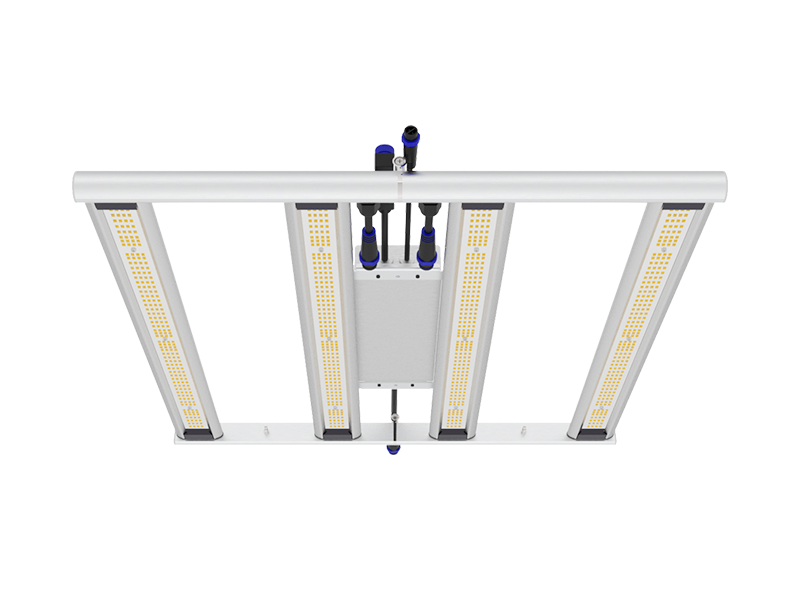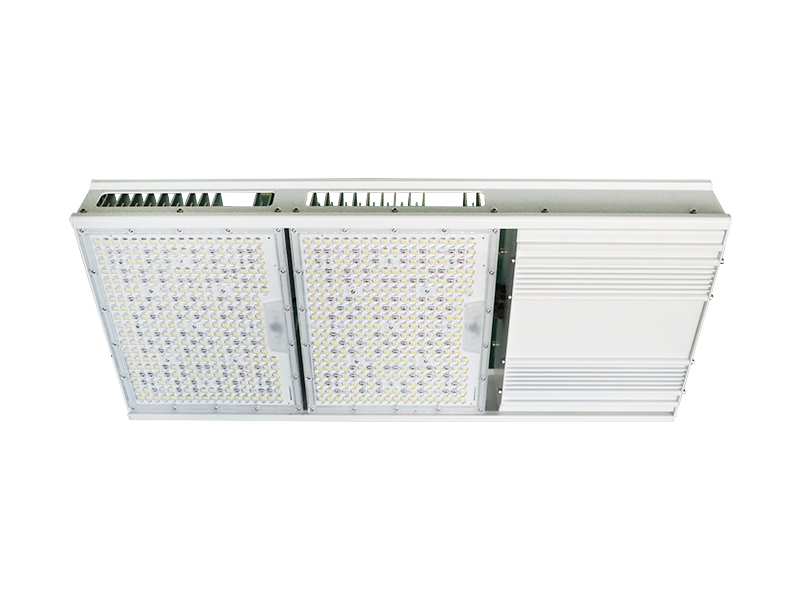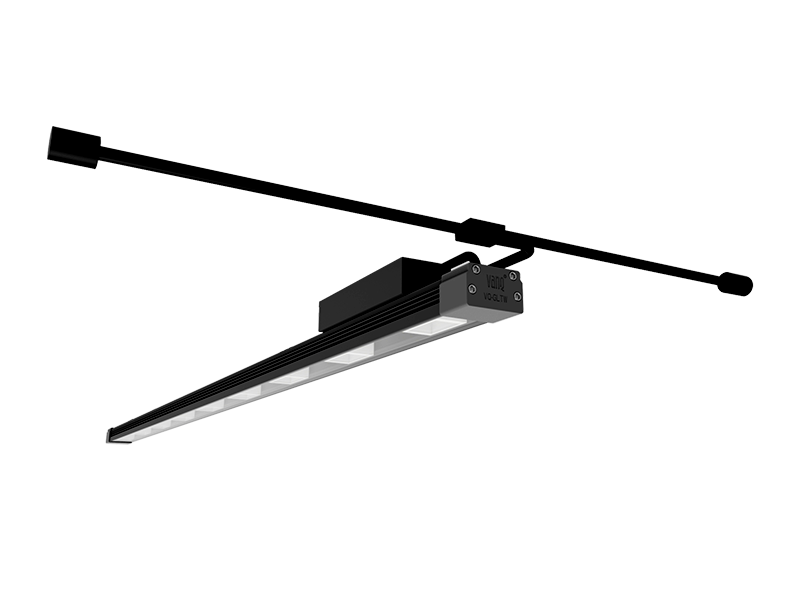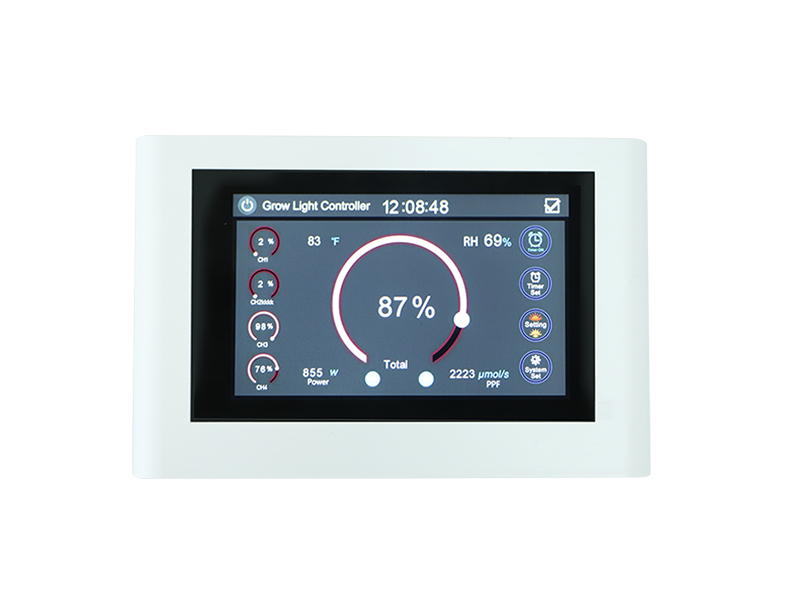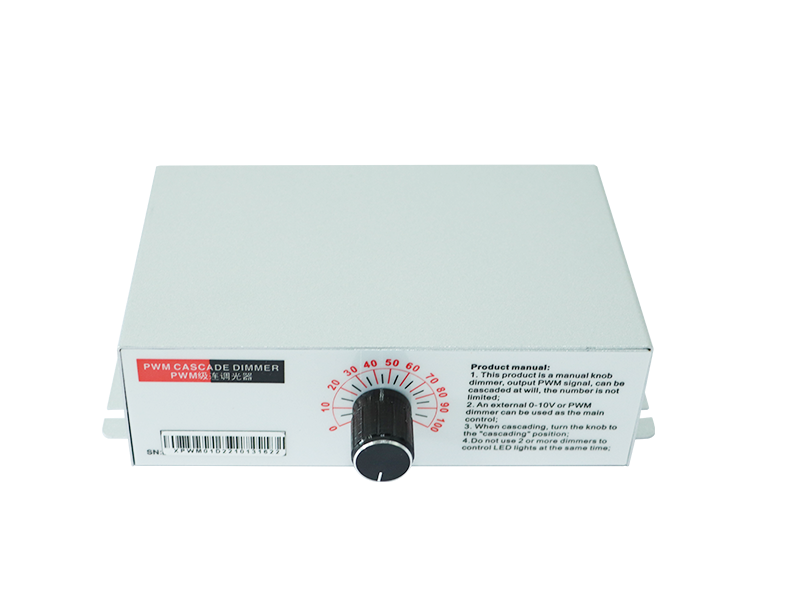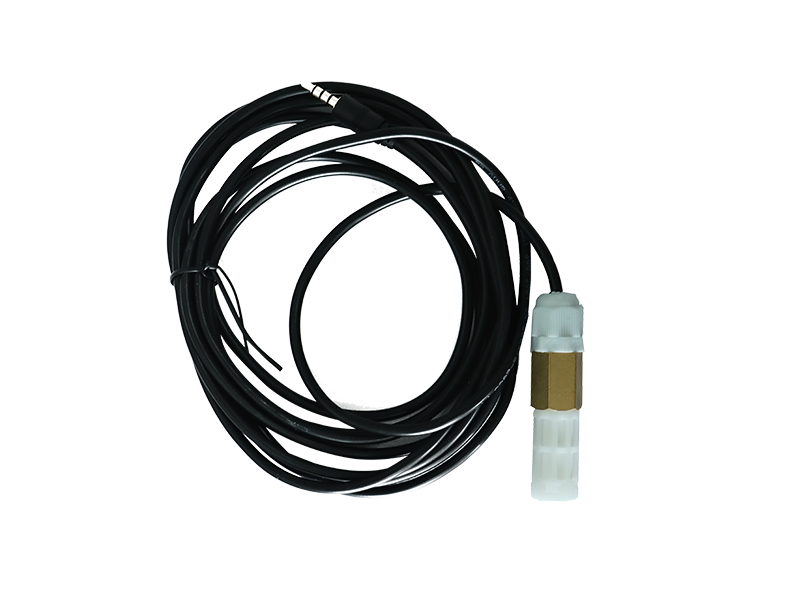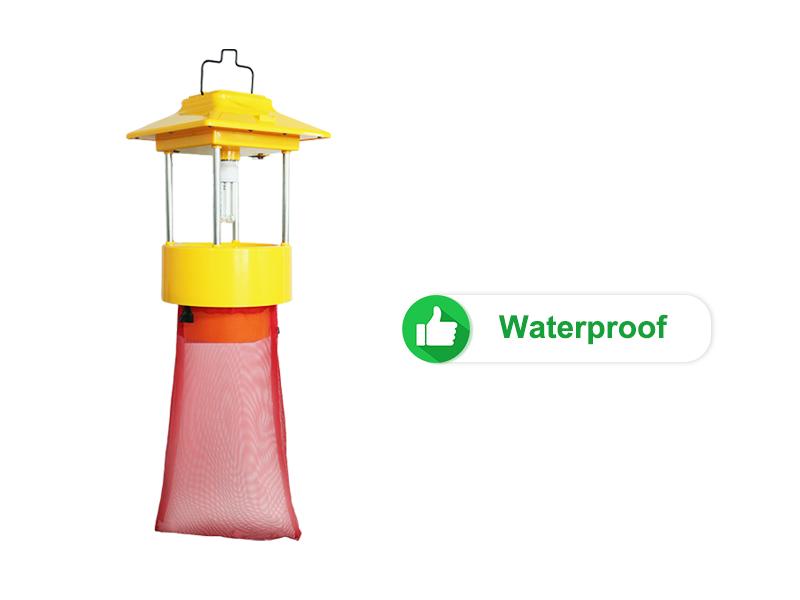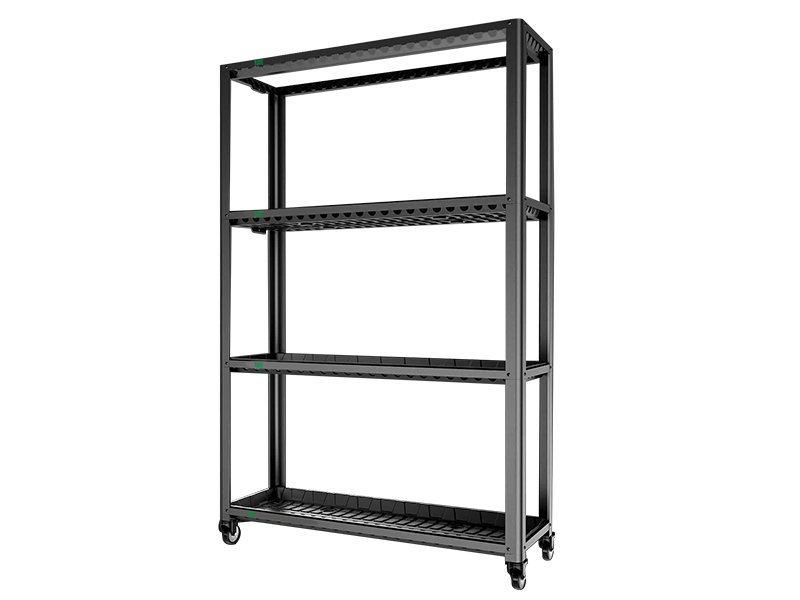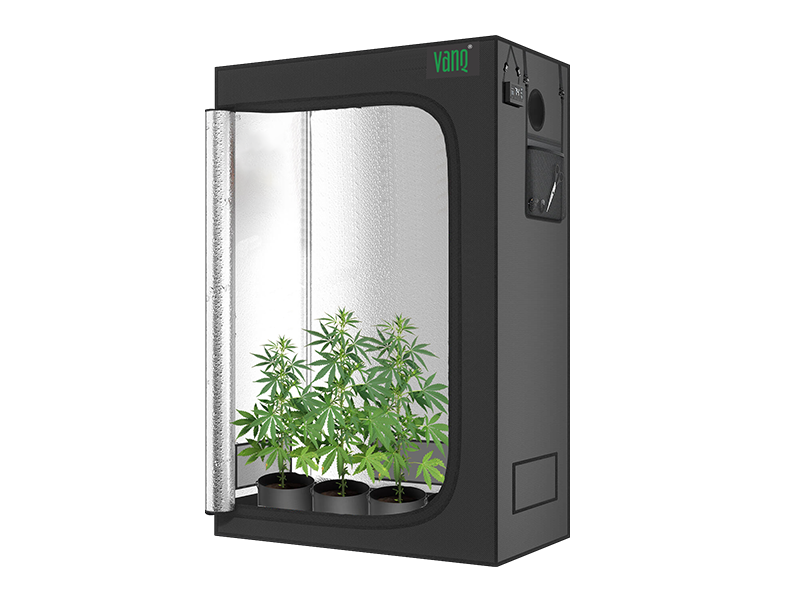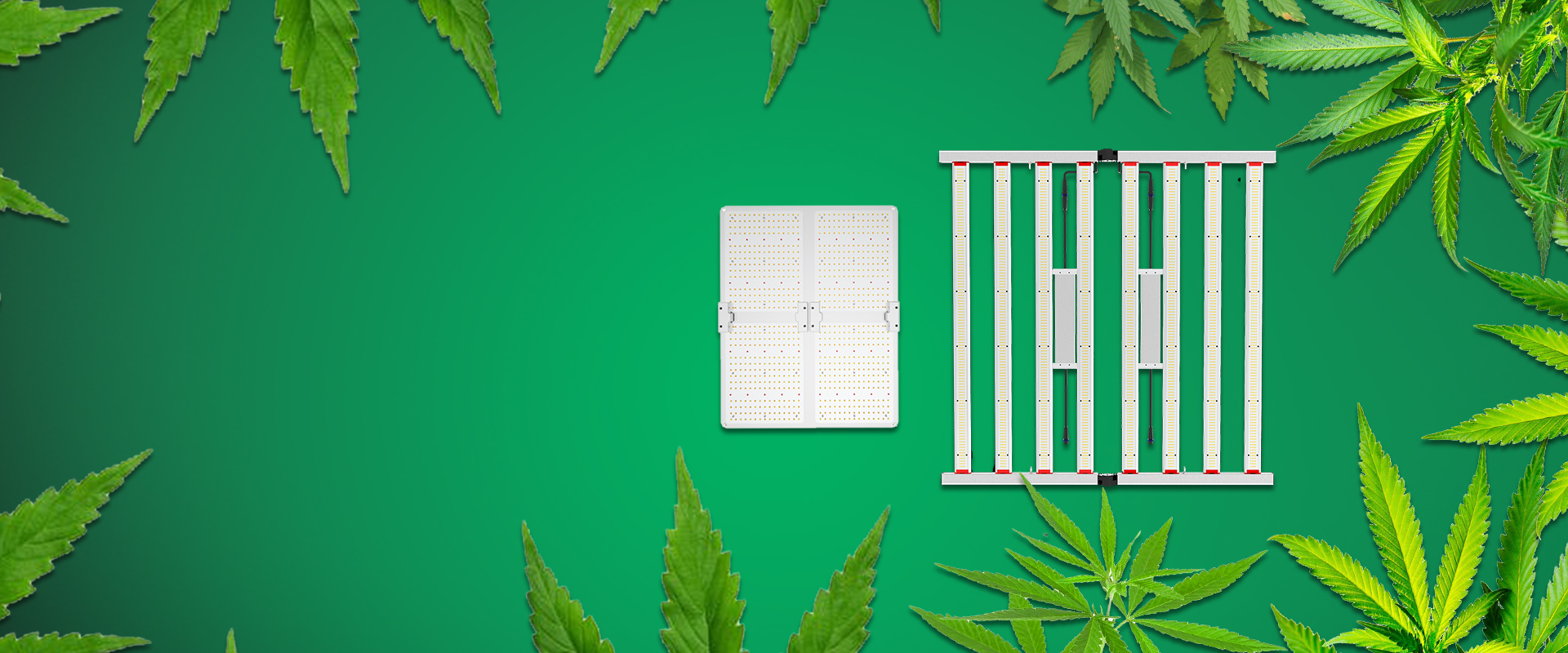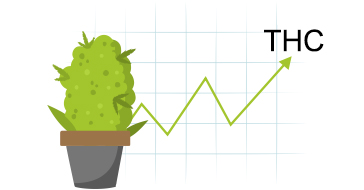
Increasing the percentage of THC in cannabis is one of the main challenges for breeders and geneticists involved in the development of new varieties of marijuana. And I must say that recent successes are truly impressive: today the most powerful marijuana varieties show an average content of up to 27-28%. That's a lot! So much so that old-school growers, who appreciate not only the killer effect, but also the taste and aroma of marijuana, have shown the opposite trend - they choose cannabis, with a THC content much lower than the maximum, to give themselves the opportunity to enjoy the exquisite bouquet of the famous varieties.
Thus, the grower's task is rather not to somehow artificially raise the percentage of psychoactive substance, but to maximize the potential of the variety, inherent at the genetic level. In short, the algorithm for obtaining the most powerful harvest can be described as follows:
Choosing a high THC marijuana strain.
Creation of favorable conditions for growth and development.
Prevention of pollination of female plants.
The right time to harvest your cannabis.
Preparing plants for harvest.
Drying for 5-10 days.
Healing.
Variety selection
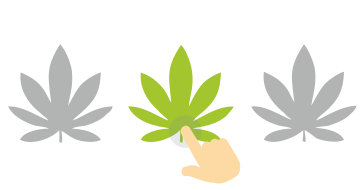
When choosing seeds, you can rely on the official data of the manufacturer - the content of THC is always indicated in the annotation or a short description, this data can be trusted. However, do not forget about the second point: the variety must be taken such that your knowledge and equipment will allow you to meet all the necessary conditions. For example, you should not take for Indore sativa cannabis strain , if you have a small grouboks. For open ground, ripening times and resistance to disease, mold and cold are important. There is no point in picking a potentially high THC strain if it doesn't mature or is killed by a fungus.
Growing conditions
You probably shouldn't list all the mistakes you have to avoid in order to get the most out of cannabis. You just need to remember that each of them will affect the quality of the final product and, of course, not for the better. Strict adherence to all rules and taking into account the characteristics of the variety will ultimately result in the maximum possible concentration of THC.
Sensimiglia

The THC content in cannabis inflorescences increases as flowering intensifies, but after pollination, the production of cannabinoids is sharply reduced, since the fertilized plant directs all the forces to the development of seeds. If this does not happen, hemp continues to synthesize cannabinoids with increasing intensity, until maturation. This marijuana is called sensimilla (Spanish: Sin Similla - seedless) and contains the highest concentration of THC. The goal of the grower is to eliminate the possibility of pollination of female plants.
Harvest time
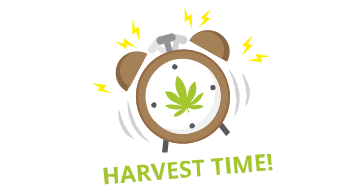
Marijuana is harvested at the moment of the highest concentration and the best (for the consumer) ratio of cannabinoids in the buds. The most accurate method for determining the time of harvest is monitoring the state of trichomes : maturity is the moment when more than half of them have become cloudy and have acquired a milky hue. In total, a “window” of 3-5 days is allotted for harvesting, and by slightly varying the period, you can slightly adjust the effect of cannabis. It is believed that early harvest, when the trichomes have just begun to grow cloudy, gives a more vigorous mental effect, and late harvest - when they have already begun to take on an amber hue - a bodily, pronounced Stone effect .
Harvest preparation
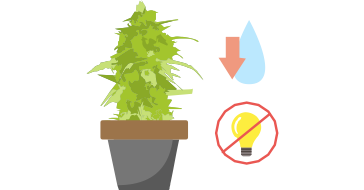
Several days prior to felling, it is recommended that a series of actions be taken to increase the THC content in the resin and its amount. First, to lower the humidity, and in two or three days, stop watering altogether. This will make the resin more concentrated. The method of light stress is also used - the plants are immersed in complete darkness for a day, immediately before harvesting. Stress is thought to stimulate the trichomes to actively produce resin. The collection itself is best done in the morning: indoors - without turning on the lights, in touch - before sunrise. The dormant buds contain more cannabinoids and less starch and sugars.
Drying
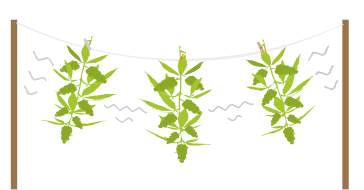
Biochemical processes do not stop in the plant immediately after it is cut. In the next few days, most of the cannabinoids are converted to active THC , chlorophyll, sugars and starches are destroyed. For all reactions to go completely, the process should not be too fast, ideally 5-10 days. It is necessary to dry hemp in a dark, well-ventilated place, at a temperature of 20-22˚С and a humidity of 45-55%. When properly dried, the THC concentration in the product will be higher than that of freshly cut buds.
Cure

The curing of marijuana buds is a fermentation process and a very slow continuation of the reactions, almost complete during drying. It is more focused on improving the taste and aroma of marijuana. With prolonged treatment, the THC content may even decrease slightly (a small part of it will turn into CBD - cannabidiol), but you should not be upset about this. Oddly enough, the force of impact does not decrease, but increases. This is due to the interaction of THC, CBD and terpenes, which together create a synergistic effect, mutually reinforcing each other's actions.



